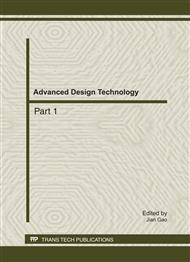[1]
L.Z. Wu, R.Q. Huang and X.J. Dong: Methods for measuring degree of saturation in unsaturated soil. Journal of Engineering Geology Vol. 788-791(2006), p.14
Google Scholar
[2]
D.G. Fredlund and H. Rahardio: Soil mechanics for unsaturated soils(John & Sons, New York 1993).
Google Scholar
[3]
M.F. Ba, C.X. Qian and G.B. Gao: Influence of Absolute Basicity and Capillary Porosity on Carbonation of Concrete. Journal of Wuhan University of Technology Vol. 889-892(2010), p.25
DOI: 10.1007/s11595-010-0114-z
Google Scholar
[4]
D.M. Sun, Y.M. Zhu and M.J. Zhang: Water-air two-phase flow model for numerical analysis of rainfall infiltration. Journal of Hydraulic Engineering Vol. 150-156(2007), p.28
Google Scholar
[5]
H.Q. Chen and X.M. Peng: Microcomputer program and graphic processing of finite element method(Hohai University Press, Nanjing 1992).
Google Scholar
[6]
Q. Li, J.H. Feng, T.M. Cai and C.B. Hu: Difference Scheme for Two-phase Flow. Applied Mathematics and Mechanics Vol. 488-496(2004), p.25
Google Scholar
[7]
C. Bergins, S. Crone and K. Strauss: Multiphase flow in porous media with phase change, Transport in porous media Vol. 275-300(2005), p.60
DOI: 10.1007/s11242-004-5740-5
Google Scholar
[8]
H. Class, R. Helming and P. Bastian: Numerical simulation of non-isothermal multiphase multicomponent processes in porous media. Advances in Water Resources Vol. 533-550(2002), p.25
DOI: 10.1016/s0309-1708(02)00014-3
Google Scholar
[9]
O. Kolditz and J. Jonge: Non-isothermal two-phase flow in low-permeable porous media. Computational Mechanics Vol. 345-364(2004), p.33
DOI: 10.1007/s00466-003-0537-x
Google Scholar
[10]
R. Stelzer and G. Hofstetter: Adaptive finite element analysis of multi-phase problems in geotechnics. Computers and Geotechnics Vol. 458-481(2005), p, 32
DOI: 10.1016/j.compgeo.2005.06.003
Google Scholar
[11]
M. Dijke, Z. Seatm, and C.J. Duijn: Multi-phase Flow Modeling of Air Sparging. Advances in Water Resources Vol. 319-333(1995), p.18
DOI: 10.1016/0309-1708(95)00028-h
Google Scholar
[12]
L.T. Shao, Z.P. Wang, and L.J. Guan: Numerical simulation of the process of pore water infiltration and pore gas flow in unsaturated soil. Advances in Water Science Vol. 8-13(2000), p.11
Google Scholar
[13]
G.Q. Tang and A.R. Kovscek: Trapped gas fraction during steady-state foam flow. Transport in Porous Media Vol. 287-307(2006), p.65
DOI: 10.1007/s11242-005-6093-4
Google Scholar
[14]
Y.M. Zhu, J.Y. Chen and D.Y. Gong: Refined solution to seepage in arch dam foundation with FEM. Chinese Journal of Geotechnical EngineeringVol. 326-330(2003), p.25
Google Scholar
[15]
C. Laroche and O. Vizika: Two-phase flow properties prediction from small-scale date using pore-network modeling. Transport in Porous Media Vol. 77-91(2005), p.61
DOI: 10.1007/s11242-004-6797-x
Google Scholar


